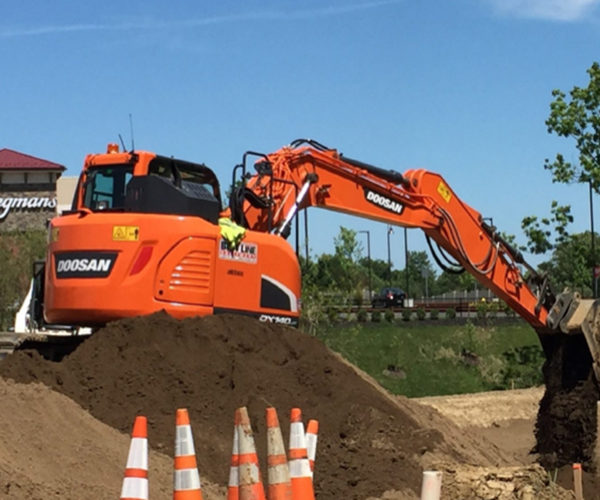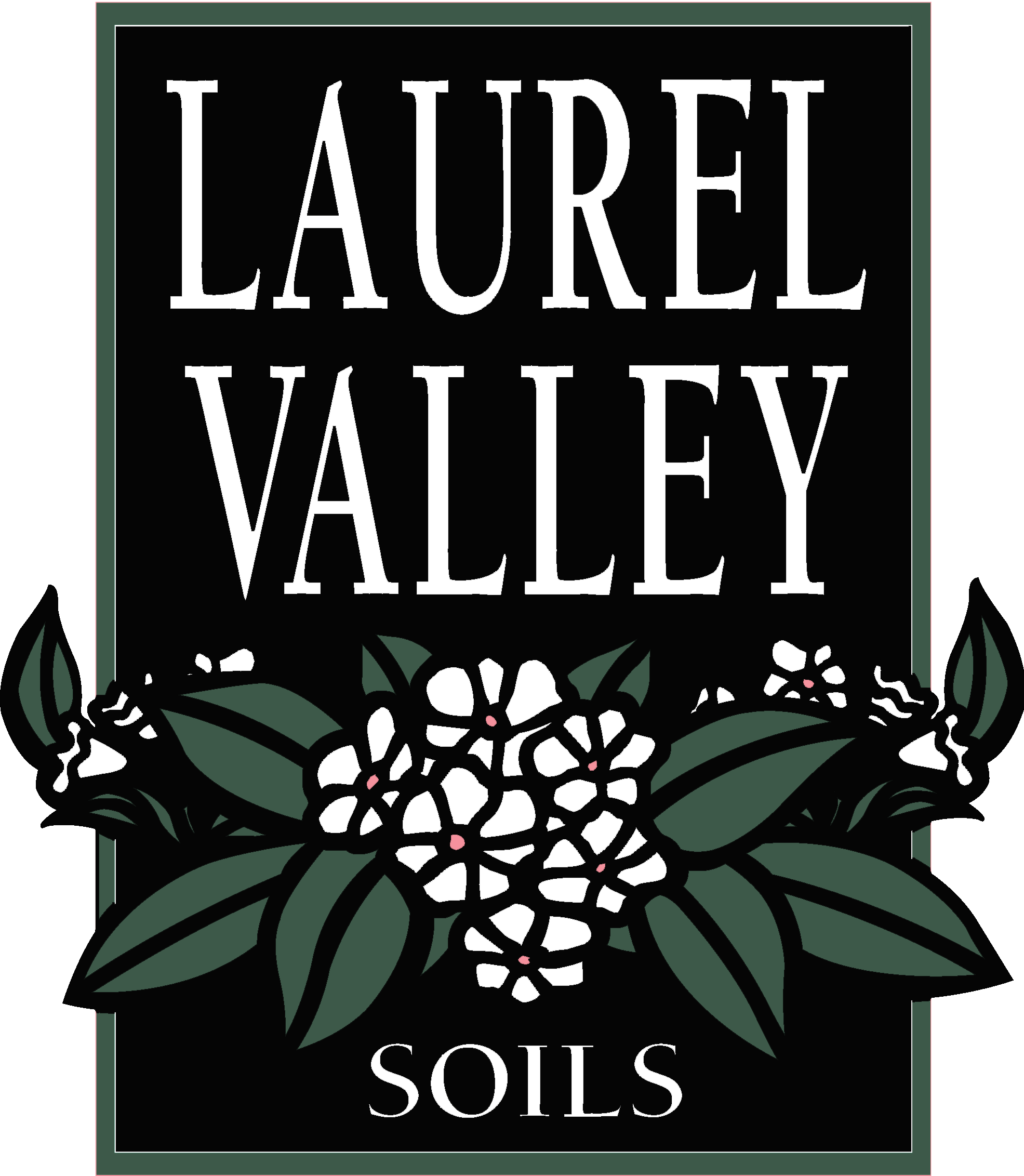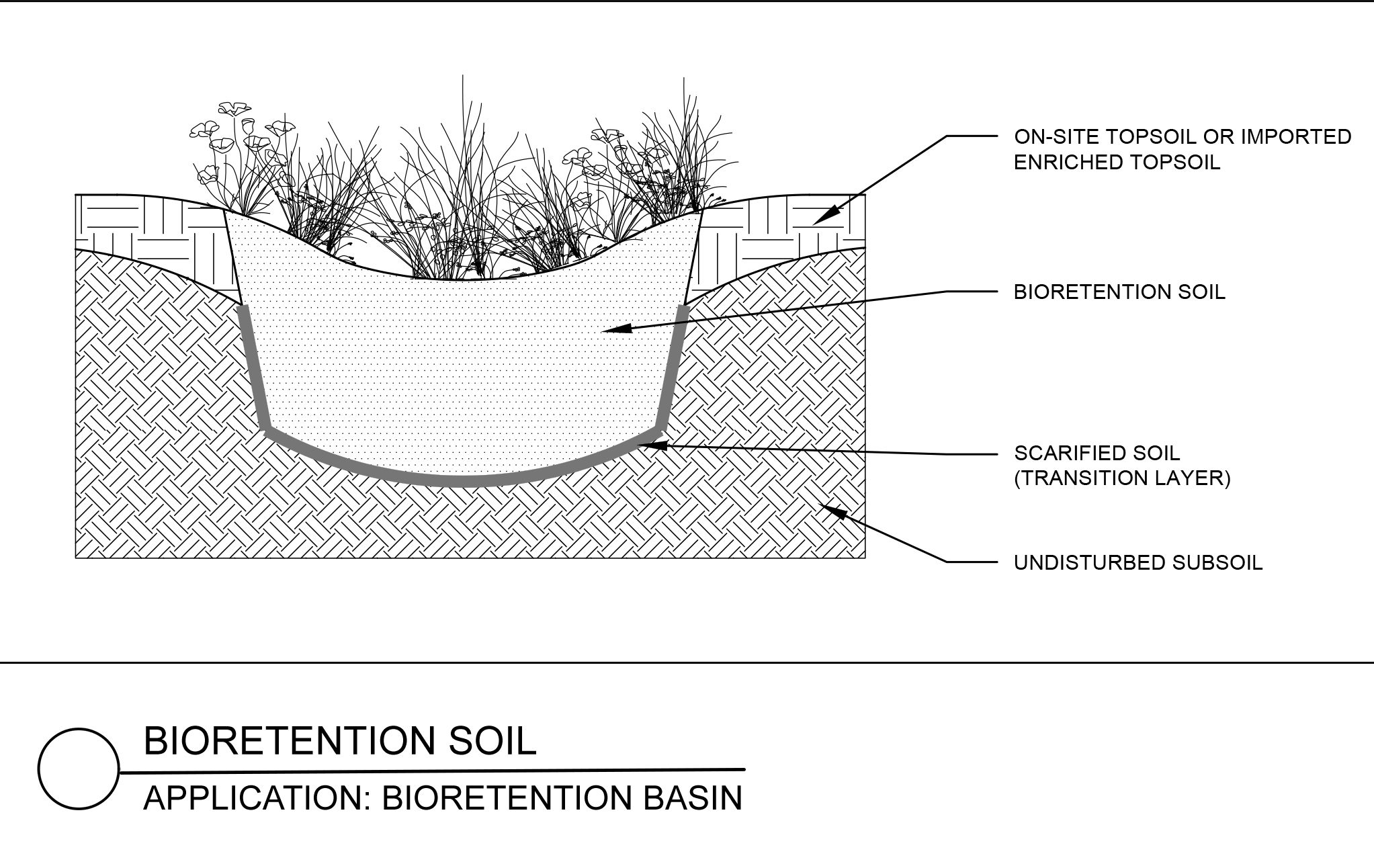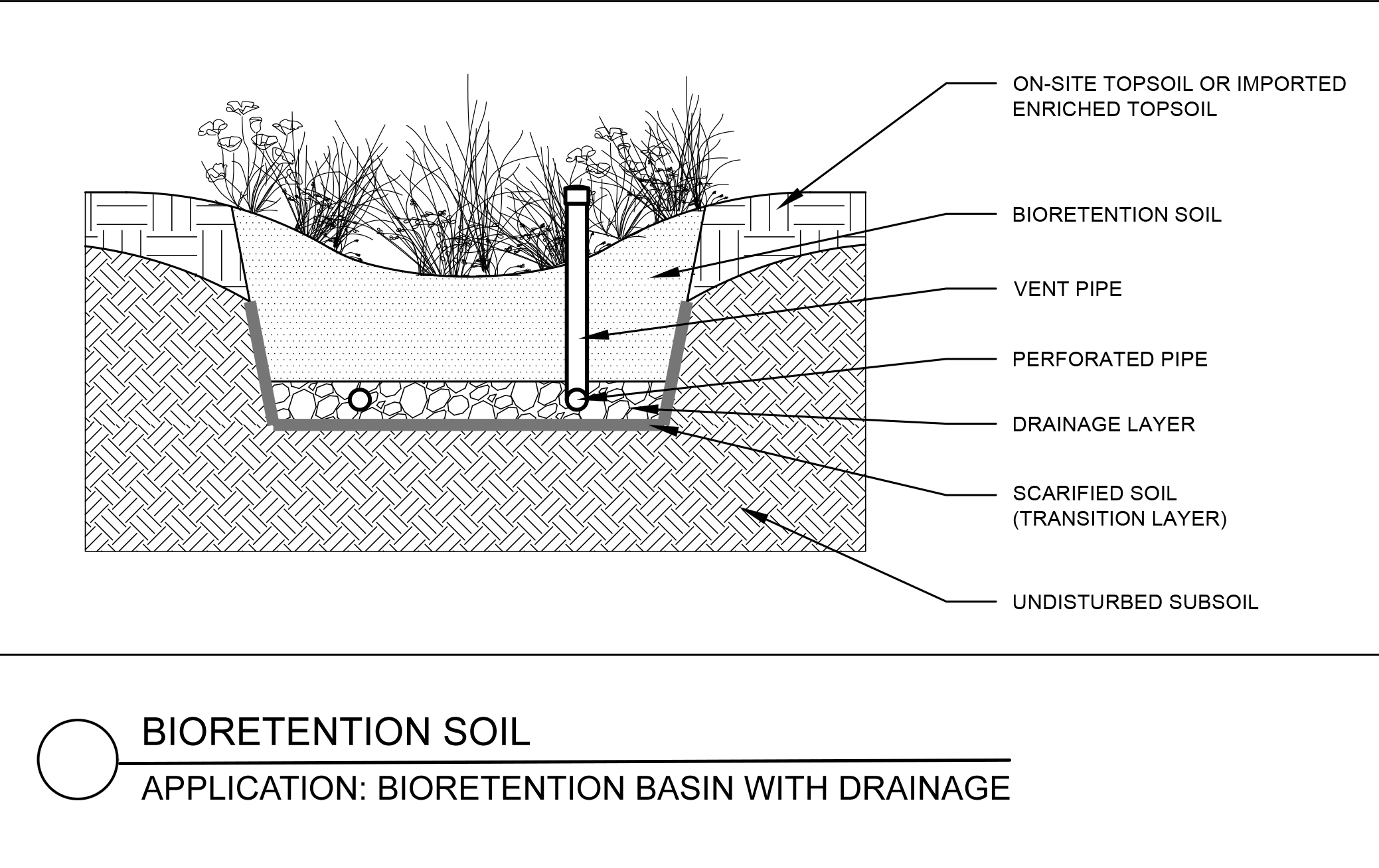Overview
Bioretention Soil is designed specifically to absorb, infiltrate, and filter stormwater runoff into the ground where it can safely recharge our groundwater systems and reduce surface flooding. The goal of a bioretention basin is to capture and divert stormwater runoff displaced from impervious surfaces. Well-designed basins also filter out untreated pollutants that otherwise might flow directly into waterways. Many bioretention basins are large in scale and while they can have attractive plantings, these utilitarian designed basins are generally located out of sight, at the low end of a parking lot or downslope from a building or road.
A stormwater management plan is now a requirement with all new construction that creates impervious surfaces. Water must be contained on site or at least slowed down to prevent flooding and pollutant movement. Bioretention basins are part of the building code and are required for most all building projects including renovations and expansions. The understanding and design of these soils is evolving rapidly.
Other industry names used are Bio-Soil, Stormwater Soil, Filter Media, Amended Soil, Engineered Soil.
Questions about our products? Contact Us 1-866-LV-SOILS
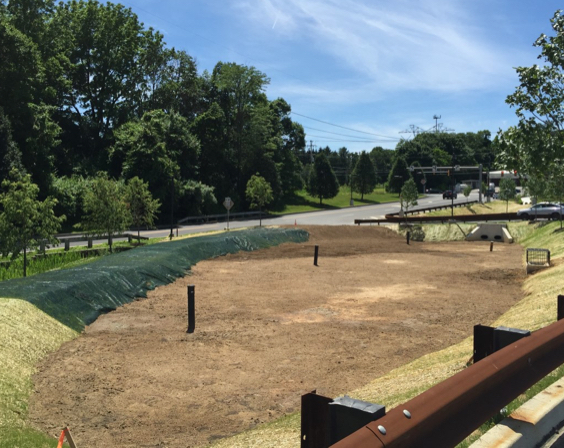
Ingredients
Bioretention Soils are generally composed from a mixture of sand, compost, soil and sometimes mulch and are designed to meet many specific performance parameters such as soil particle size, gradation, infiltration rate, pH and organic matter content. These soils are sometimes designed as whole systems where they are coupled with underdrainage for enhanced performance. Information and design of rain garden and bioretention soils is evolving rapidly. The team at Laurel Valley Soils is qualified and happy to offer guidance for Engineers and Landscape Architects in the development or selection of specific bioretention soil solutions and specifications.
Analytical
Bioretention Soil is generally light brown in color, has a light bulk density, and can feel spongy. Often on the sandy side and sometimes containing mulch, these soils generally have a neutral pH range, an average 5% organic matter content by weight, and weighs between 1800 to 2400 lbs/cubic yard. Most projects specifying Bioretention Soil will provide a specification with specific parameter ranges for the various elements that combined provide the functionality of the mix. Laurel Valley will assist with the submission process by providing test reports, conducting new testing if required and interfacing with project engineers though out the approval process as needed. If a specification is not provided, Laurel Valley can offer advice as well as many off the shelf mix options.
Benefits
Bioretention Soil captures, infiltrates, and filters stormwater. It also supports plantings that assist with this process while providing ecologically friendly wildlife habitats and light pollutant absorption.
Benefits at a Glance
- Organic Matter
- Nutrients
- Biology
- Water Holding Capacity
- Improves Soil Structure and Porosity
Applications
Bioretention Soils are often installed in depths ranging from 12-48″. The deeper medias are often installed in lifts that are lightly compacted. The best way to install Bioretention Soil when site conditions allow is to use an excavator from outside the basin a telebelt or slinger truck.
See our soils at work
